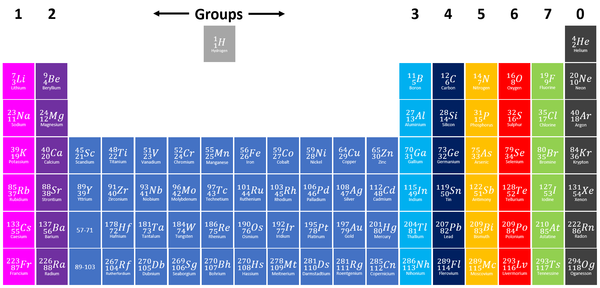Difference between revisions of "Group 6"
(Created page with "==Key Stage 3== ===Meaning=== Group 6 are elements on the Periodic Table with 6 electrons in their outer shell. ===About Group 6=== {| class="...") |
|||
| Line 29: | Line 29: | ||
|} | |} | ||
: The [[element]]s in [[Group 6]] are: | : The [[element]]s in [[Group 6]] are: | ||
| − | :*[[Oxygen]] | + | :*[[Oxygen]] can gain 2 [[electron]]s to form [[Negative Ion|negative ions]] with a [[Electrical Charge|charge]] of -2. |
| − | :*[[Sulphur]] | + | :*[[Sulphur]] can gain 2 [[electron]]s to form [[Negative Ion|negative ions]] with a [[Electrical Charge|charge]] of -2. |
| − | :*[[Selenium]] | + | :*[[Selenium]] can gain 2 [[electron]]s to form [[Negative Ion|negative ions]] with a [[Electrical Charge|charge]] of -2. |
| − | :*[[Tellerium]] | + | :*[[Tellerium]] can lose [[electron]]s to form [[Positive Ion|positive ions]]. |
| − | :*[[Polonium]] | + | :*[[Polonium]] can lose [[electron]]s to form [[Positive Ion|positive ions]]. |
Latest revision as of 08:41, 4 April 2019
Key Stage 3
Meaning
Group 6 are elements on the Periodic Table with 6 electrons in their outer shell.
About Group 6
| Group 6 elements are shown in red on this Periodic Table. |
Key Stage 4
Meaning
Group 6 are elements on the Periodic Table with 6 electrons in their outer shell.
About Group 6
| Group 6 elements are shown in red on this Periodic Table. |
- The elements in Group 6 are:
- Oxygen can gain 2 electrons to form negative ions with a charge of -2.
- Sulphur can gain 2 electrons to form negative ions with a charge of -2.
- Selenium can gain 2 electrons to form negative ions with a charge of -2.
- Tellerium can lose electrons to form positive ions.
- Polonium can lose electrons to form positive ions.
